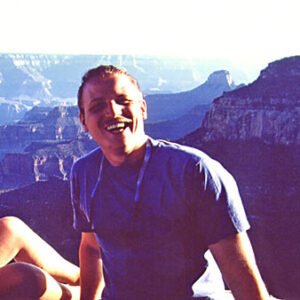The scientific and psychological foundations of photography
The photographer Galen Rowell once wrote “Luck favors the prepared mind” and that is exactly what this series is about: better pictures through an understanding of the basic physiological, psychological and technical requirements.
Nature Science Photography is a series that will benefit anyone interested in photography. It provides beginners with a solid foundation by linking the various important photographic topics. Advanced photographers will benefit from the explanation of questions that many other non-fiction books leave out.
The first part – Image creation, Depth and Size – deals with elementary questions of visual perception and photographic image creation.
How does our sense of sight work between the eye and the brain?
How are photographic images created?
Why do we perceive our environment in three dimensions?
What factors do we have to take into account in order to convey spatial depth in our photographs?
How are our perception of object sizes and the depiction of them oriented?
At the end there is a physiologically based conclusion as to what we should do in photography in order to take visually good pictures.
This second part – Lightness and Color – deals with the visual and technical basics of brightness and color.
How do we perceive brightness and color?
Why do we perceive our environment in color?
Does a colored world exist without us?
How do we reproduce impressions of brightness and color?
Why is color management necessary and how does it work?
How do photographic image carriers generate brightness and color?
What clues can we draw from the work of the visual system for image design?
The third part sheds light on the subject of contrast.
What is contrast and how do you determine it?
Why is contrast crucial for our visual perception?
What is the contrast capacity of the visual system and what factors does it depend on?
How many tonal values can we perceive in a photo?
What expectations do we have of the contrast reproduction of a photograph?
How do we meet these expectations in analog and digital photography?
What does the contrast capacity of our image carriers depend on?
What is gamma correction all about?
What role does contrast play in exposure metering?
The fourth part is dedicated to the complex of visual sharpness.
What is visual sharpness?
Why are resolution and edge sharpness decisive for our impression of sharpness?
On which factors does the resolution of the visual system depend?
Which optical principles determine the image sharpness?
What is depth of field and how does it relate to the various photographic parameters?
What is the resolution of the photographic components and the image?
How can we help our images to achieve greater edge sharpness?
The fifth deals with light, the elementary component of photography.
What is light?
How can we describe and produce it?
What is its relationship to the sun, our main source of light?
What are the photographically significant light phenomena in the atmosphere based on?
What do we have to consider in order to include the moon as a motif in the picture or to use it as a source of light?
How can we photograph the stars?
How can we make the astronomical conditions work for the best light?
All content will be online as soon and as fast as I can code it in. So check back often if those topics resonate with you.


 Since I started my first website in the year 2000, I’ve written and published ten books in the German language about photographing the amazing natural wonders of the American West, the details of our visual perception and its photography-related counterparts, and tried to shed some light on the immaterial concepts of quantum and chaos. Now all this material becomes freely accessible on this dedicated English website. I hope many of you find answers and inspiration there. My books are on
Since I started my first website in the year 2000, I’ve written and published ten books in the German language about photographing the amazing natural wonders of the American West, the details of our visual perception and its photography-related counterparts, and tried to shed some light on the immaterial concepts of quantum and chaos. Now all this material becomes freely accessible on this dedicated English website. I hope many of you find answers and inspiration there. My books are on